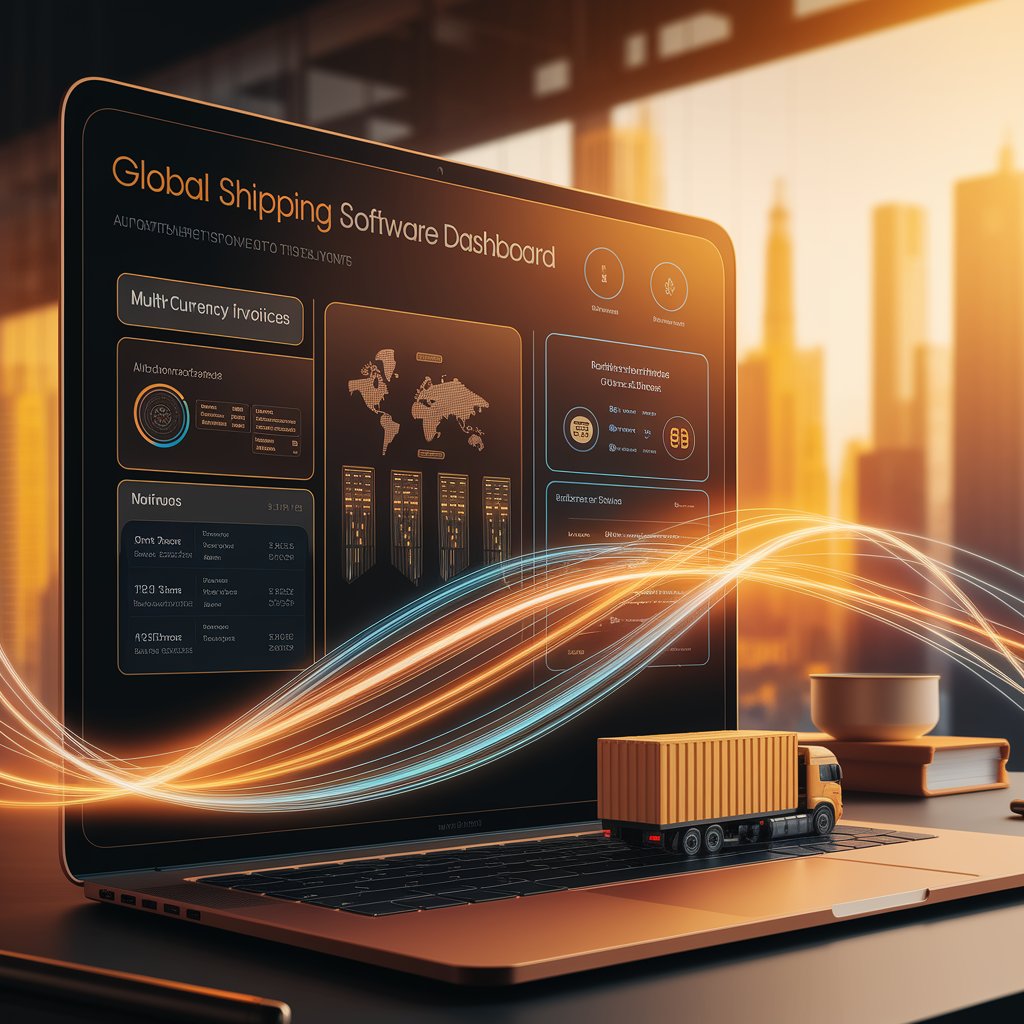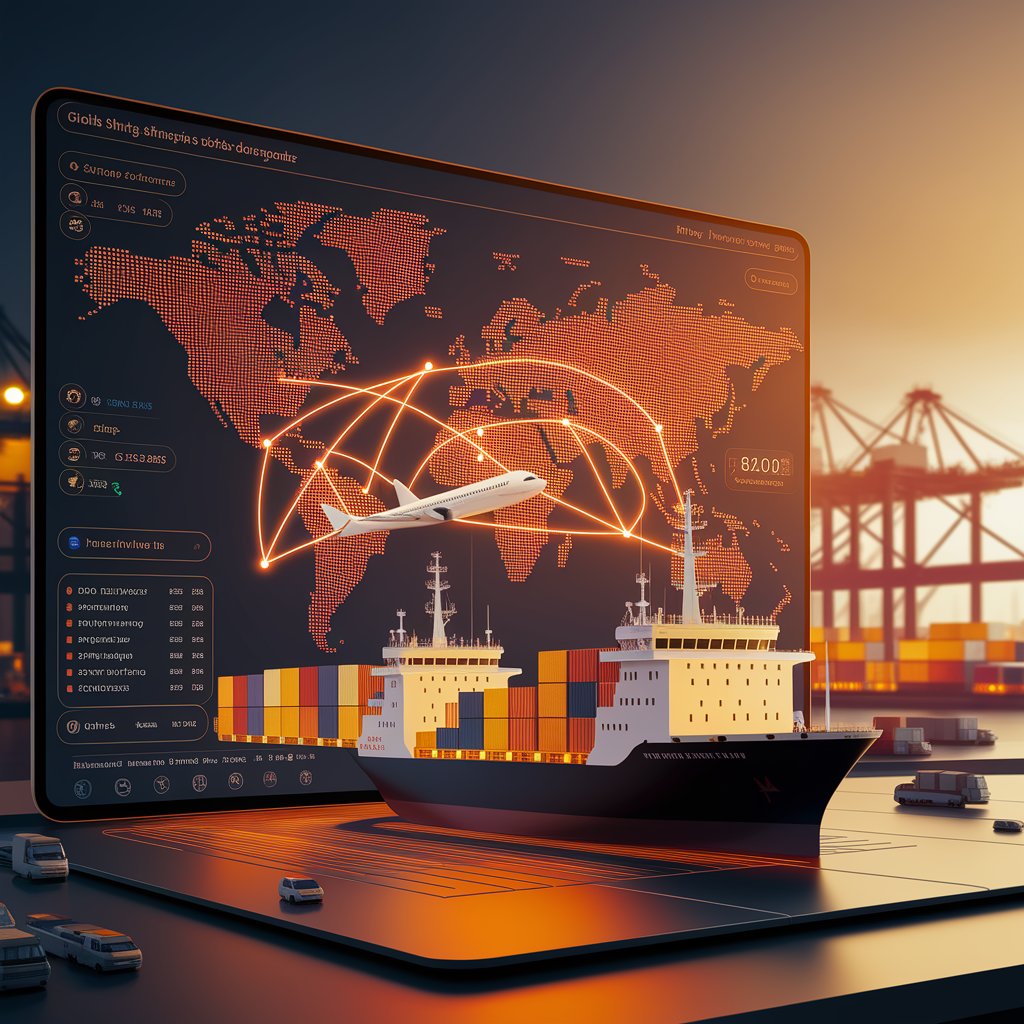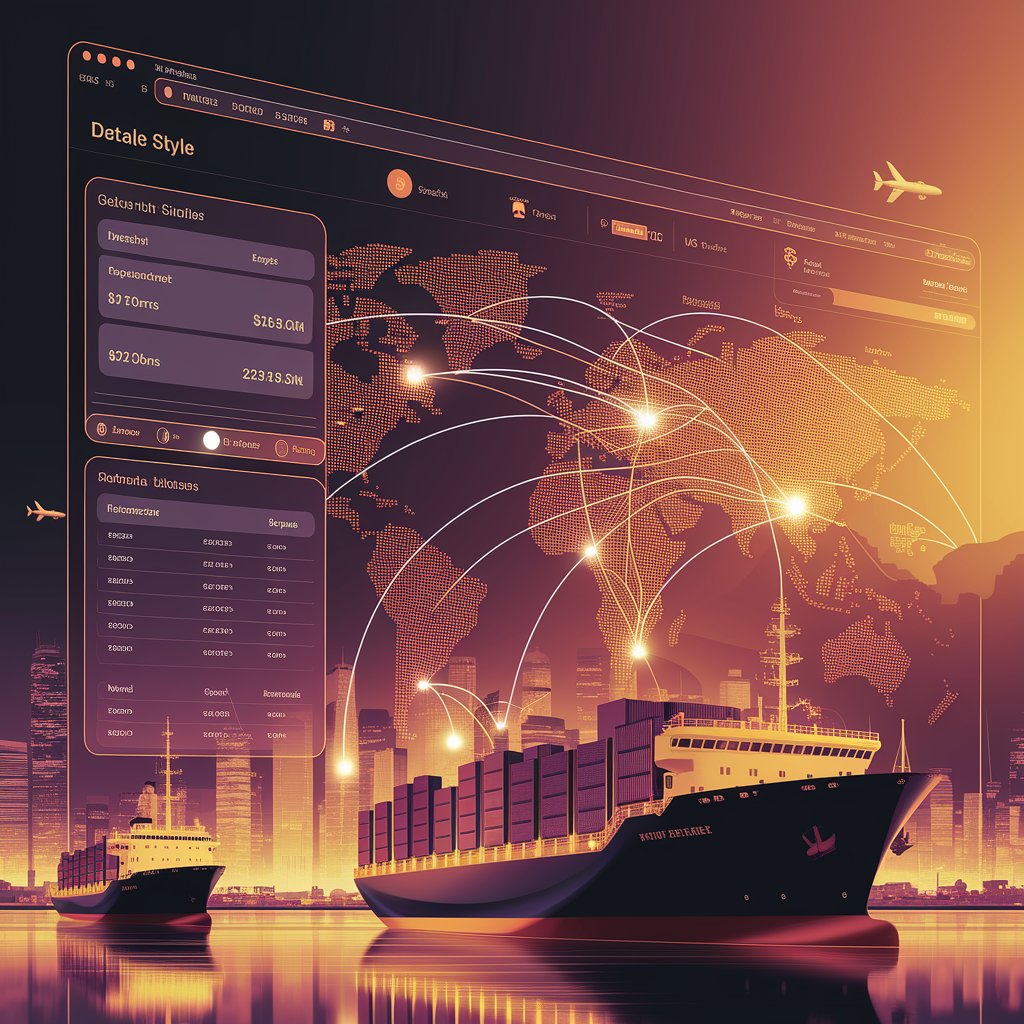Global Shipping Software: Streamlining International Trade

Introduction
This is where global shipping software comes in. By digitizing and automating freight operations across borders, companies can streamline workflows, reduce costs, and ensure compliance with international regulations.
What Is Global Shipping Software?
Global shipping software is a digital platform that enables businesses to plan, execute, and monitor international freight operations. It integrates with ERP, TMS, and WMS systems, consolidating data from multiple carriers and countries into a single platform.
Core functionalities include:
- Automated booking and rate management
- Customs compliance and documentation
- Multi-currency billing and invoicing
- Real-time cargo tracking
- Performance analytics and reporting

Key Features of Global Shipping Software
- Automated Customs Documentation – Generate and file import/export forms instantly.
- Carrier Integration – Compare rates and book across multiple international carriers.
- Multi-Currency Billing – Handle payments and invoicing in different currencies.
- Real-Time Shipment Tracking – Monitor global shipments across sea, air, rail, and road.
- Compliance Tools – Ensure adherence to trade regulations, tariffs, and sanctions.
- Analytics Dashboards – Gain insights into shipping costs, delays, and performance.
Benefits of Global Shipping Software 📈
- Efficiency Gains – Reduce manual paperwork and speed up cross-border operations.
- Cost Savings – Compare carriers, routes, and rates to optimize budgets.
- Global Visibility – End-to-end tracking across multiple regions and modes.
- Risk Reduction – Avoid penalties with automated compliance.
- Scalability – Handle higher shipping volumes without proportional costs.
- Improved Customer Satisfaction – Provide accurate ETAs and proactive updates.

Real-World Applications
- Freight Forwarders – Centralize bookings and compliance for international clients.
- Global Retailers – Manage imports and exports across continents efficiently.
- E-commerce Businesses – Automate global shipping for cross-border orders.
- Pharma & Cold Chain Logistics – Ensure compliance and monitoring for sensitive goods.
- 3PL & 4PL Providers – Offer end-to-end global visibility as a value-added service.
Challenges in Implementing Global Shipping Software
- Integration with Legacy Systems – Older ERP/TMS platforms may resist new connections.
- High Upfront Costs – Global platforms often require significant investment.
- Data Accuracy Issues – Errors in documentation or rates can delay shipments.
- Cybersecurity Risks – Sensitive trade and financial data must be protected.
- Change Management – Staff and partners must adapt to digital-first workflows.

Best Practices for Adoption
- Start with High-Volume Routes – Deploy software where global shipping is most frequent.
- Ensure Data Cleanliness – Standardize documentation and contracts.
- Integrate Across Platforms – Connect ERP, CRM, TMS, and WMS systems.
- Train Teams & Partners – Ensure global offices and partners adopt the same system.
- Leverage Analytics – Use performance data to negotiate better carrier contracts.
- Plan for Scalability – Choose a platform that supports expansion to new markets.
The Future of Global Shipping Software 🚀
- AI-Powered Route Optimization – Predict the fastest and most cost-efficient paths.
- Blockchain Documentation – Tamper-proof global trade compliance records.
- Digital Twins – Simulate international trade flows before execution.
- IoT-Enabled Cargo Tracking – Real-time monitoring of global shipments.
- Green Shipping Analytics – Track emissions and adopt sustainable practices.
Conclusion
Global shipping software is redefining how businesses manage international logistics. By automating documentation, providing real-time tracking, and ensuring compliance, these platforms reduce costs and improve efficiency across global supply chains.
For shippers, freight forwarders, and carriers, investing in global shipping software isn’t just about digitization—it’s about staying competitive in the fast-changing world of international trade.
